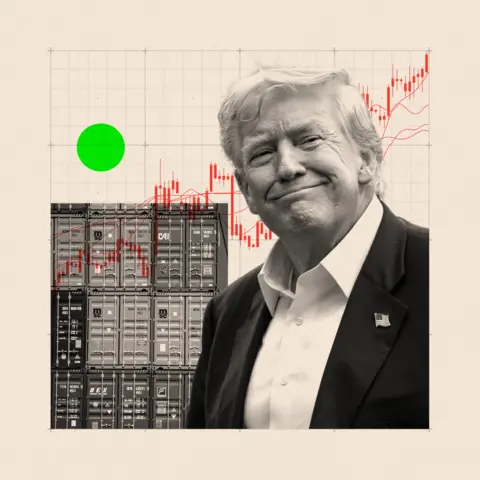The recent developments in global trade, specifically concerning former President Donald Trump’s tariffs, present a complex portrait of victory juxtaposed with potential pitfalls. In an astonishing announcement made in April, Trump rolled out sweeping new import tariffs, a move that, while initially met with panic, has now been couched as a triumph by the administration. Fast forward to today, Trump’s narrative frames these tariffs as part of a broader strategy to revitalize American manufacturing, generate increased foreign investment, and tap into new revenue streams.
However, the actual outcomes of these tariffs remain clouded by uncertainty. After a tumultuous period when markets reacted negatively to similar announcements, the situation appears to have stabilized somewhat. By establishing several new trade agreements with nations around the globe, Trump has shifted the conversation. Yet, the lingering question remains: will these policies yield the benefits he claims, or will they engender unforeseen negative consequences?
It’s important to note that while the initial resistance to free trade has seemingly morphed into a formidable wave, the ramifications continue to unfold. For many nations, this has been a clarion call, prompting a reevaluation of alliances and trade routes. Analysis suggests that while Trump may perceive his current position as victorious, the longer-term effects of these tariffs remain ambiguous and could potentially backfire, affecting both his legacy and the broader American economy.
A significant milestone was reached on August 1st, a date etched into the minds of international policymakers. This was framed as a deadline for renegotiating trading terms with the U.S. or risking debilitating tariffs. Despite predictions from Trump’s advisers, only a handful of trade agreements have been announced, many of which lack the extensive detail customary in prior negotiations. By the end of July, only about a dozen tentative agreements had emerged, raising concerns regarding the effectiveness and depth of these new trading terms.
Among the nations most affected by these developments is the United Kingdom. Being one of the first to adjust to Trump’s tariffs, the UK found that the 10% rate applied to its goods was less severe than the 15% charged to countries like the European Union and Japan, where trade imbalances are more pronounced. Although this has brought some relief, the larger picture remains troubling. Many nations are now navigating a complex landscape of imposed tariffs that impact their ability to conduct business effectively with the U.S.
As the analysis evolves, some positive outcomes are beginning to surface. The fear of an impending economic downturn and the worst scenarios surrounding tariffs has been mitigated to an extent. The outcomes of negotiations have provided businesses with clarity, facilitating investment planning and decision-making. Markets have responded favorably as increased certainty allows firms to adapt to the new cost structure of U.S. tariffs.
However, the picture is not entirely rosy. The average tariff on goods entering the U.S. has surged dramatically—now hovering around 17%, compared to a pre-policy level of only 2%. Although the equity markets show resilience, it’s imperative to understand that the increase in tariffs will likely trigger price hikes for consumers, which might dampen spending and slow economic growth.
Furthermore, the geopolitical landscape is shifting, with nations like India beginning to capitalize on U.S. fears over reliance on China by becoming significant sources of exports, particularly in technology sectors. Conversely, countries such as Germany are grappling with the implications of these tariffs, facing potential reductions in economic growth, especially within their robust automotive sector.
In summary, while Trump’s tariffs may appear as a victory on the surface, this comes with intricate and multifaceted ramifications. The implications of these trade policies not only reshape U.S. relations with its traditional allies but also introduce a layer of unpredictability into established economic relationships. As these changes continue to unfold, both short-term benefits and long-term costs will reveal themselves, potentially altering the trajectory of global trade and America’s place within it. For now, the world watches closely as these developments play out, aware that the stabilization of international trade dynamics remains precariously in flux.












